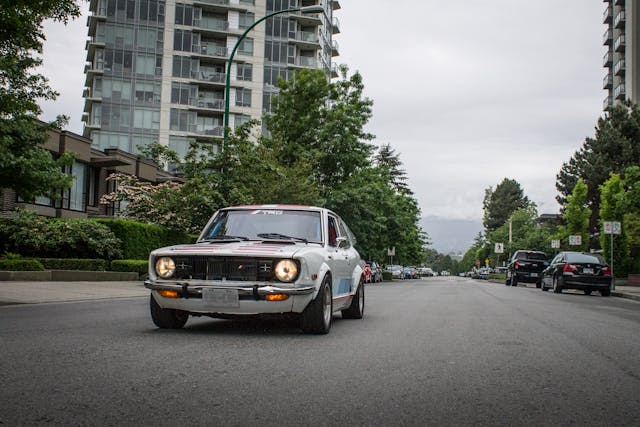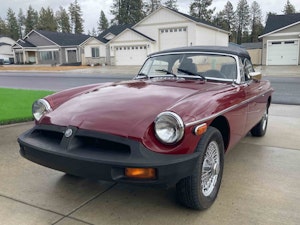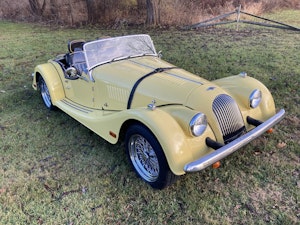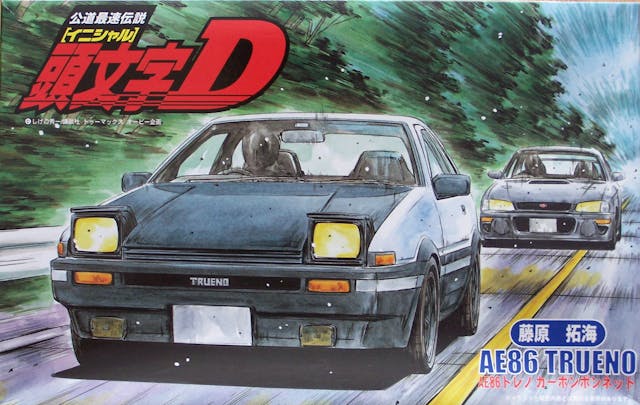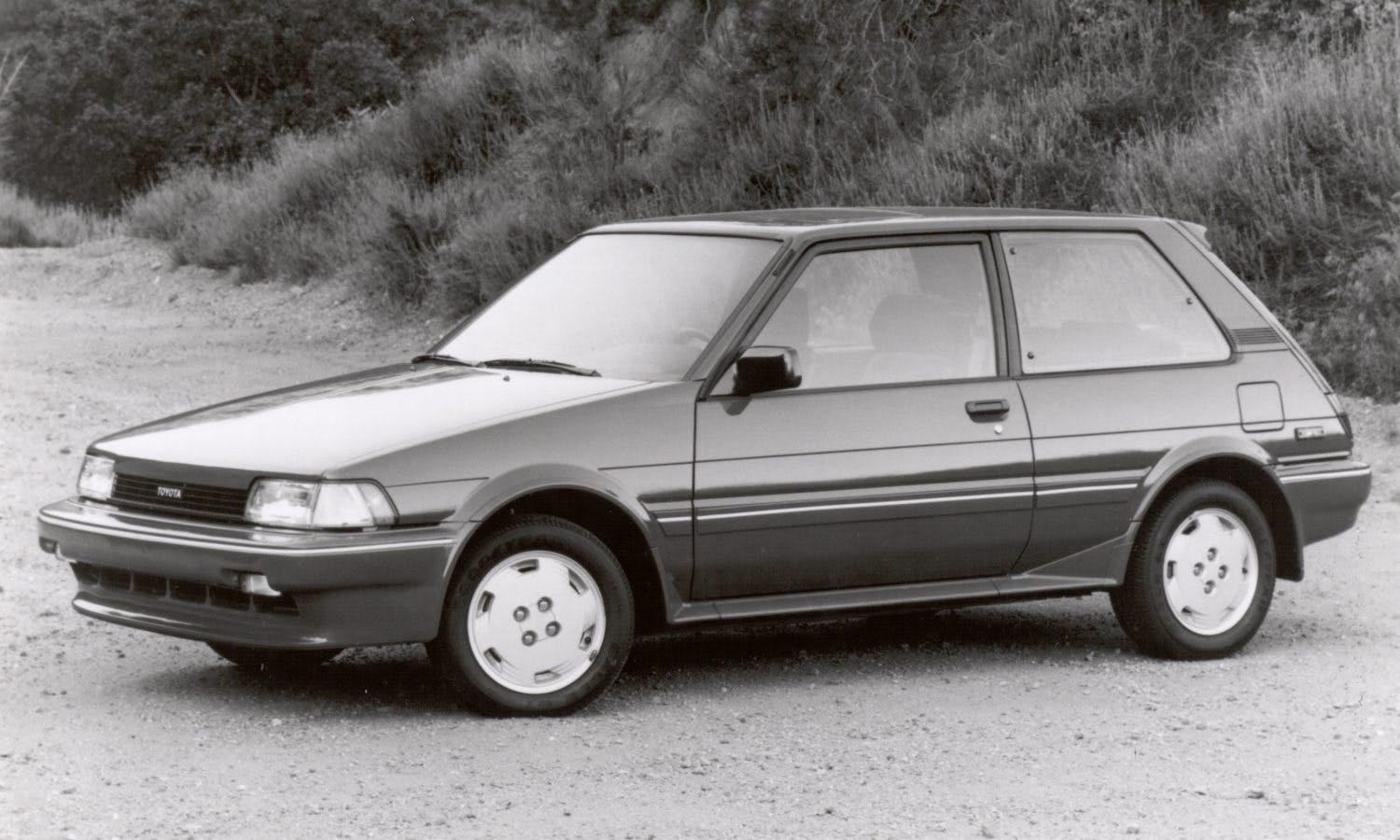Media | Articles
Before the GR, the tepid Corolla had several sizzling moments
Toyota’s new max-attack GR Corolla has many performance enthusiasts simultaneously slavering and cocking their heads in excited confusion, much like Labrador retrievers. Three hundred horsepower of forced-induction, three-pistoned, rally-bred fury? Good! All-wheel drive with locking differentials and adjustability for rear bias? Great! A manual transmission and a proper handbrake instead of an electronic switch? Is this a madlib for the ultimate fizzy hot hatch?
Well, yes, except that it’s a Corolla. Puzzling, to be sure. To find yourself drooling over a car with that particular nameplate is like waking up one day with an inexplicable craving for Brussels sprout. Usually sensible, reliable, forgettable. But when you cover it in tangy balsamic and chunks of crackly bacon …
Type R versions of the Civic don’t boggle the mind, given Honda’s compact has a more consistent history of entertaining offerings. The deft and eager Elantra N was a welcome surprise, but Hyundai and the N performance brand been on such a roll of late that it adds up. The GR Corolla, however, takes the traditionally conservative compact into truly bonkers territory.
And yet, peering back into Toyota history reveals several examples in which the snoozy Corolla raised significant alarms among driving enthusiasts. Here are five notable Corolla zingers:
1972–1974 TE27 Series
The earliest Corollas were the sort of shoebox-shaped sedans that first introduced customers to Japanese cars in the 1960s. If you had a pulse, you popped over to Datsun and bought yourself a 510. If you were looking for something cheaper, you were cross-shopping the Corolla with the Datsun 1000. (At least it was sprightlier than the earlier Publica.)
Marketplace
Buy and sell classics with confidence
In its second-generation, however, the Corolla moved up in space and pace. Various body styles were available, and as would become Corolla tradition, most of the engine options were thrifty and durable four-cylinders of meager displacement.
Starting in 1972, North American buyers had access to a fastback Corolla coupe (chassis designation TE27) with a five-speed manual gearbox. Dubbed the S-5 or SR-5 depending on trim, it could be had with a 1.6-liter eight-valve engine that made roughly 90 hp (102 gross, 88 net). Clocking in at 1900 pounds or so, the TE27 had a power-to-weight ratio sufficient for a few budget-minded racers to take the SR-5 to the track, where it proved decently quick and reliable enough to go the distance on longer racing stints.
Plus, it was just plain fun. This was an era where most cheap cars were rear-wheel-drive, and that meant hand-me-down hoonery was the rule of the day. Every rear-drive compact car feels like it has enough power when the snow starts falling.
Meanwhile, across the Pacific, a genuine collectible Corolla remained out of Americans’ reach. A pair of them, actually. Called either the Corolla Levin, or Sprinter Trueno—depending which Toyota dealership chain they were sold at—these right-hand-drive cars were inspired by the Alfa-Romeo Giulia Junior. Apart from mild cosmetic differences, they were mechanically identical to each other, with twin-cam engines and twin Mikuni side-draft carburetors. If you’re a fan of the Toyota 2000GT but lack a seven-figure budget, these hot little coupes are fast, fun, and still relatively accessible if you can find one. In fact, the president of the Japanese 2000GT owners’ club proudly parks an orange TE27 in a collection that includes one of the two You Only Live Twice convertibles.
1983–1987 AE86 GT-S
Even casual fans will have clocked the alphanumerics on this particular 1980s coupe. Toyota likes to draw a direct line from this 1980s wedge to the current GR86, emphasizing a heritage of lightweight affordability, balanced handling, and rear-wheel-drive shenanigans. The new version accomplishes its mission handily, but it’s really a Subaru, not a Corolla.
The original hachi-roku (Japanese for “Eight-Six”) is most definitely a Corolla. It’s less of a dedicated 2+2 sports car than its boxer-engined would-be descendant, but that also means a useful liftback rear hatch and a roomier cabin. Once again, the Japanese Levin and Sprinter got the most sporting variants, but the North American spec Corolla GT-S model was genuinely interesting. It shared its four-cylinder engine with the MR2, another laudable Toyota attempt at bringing sporting performance to the everyman. Often referred to by its engine code by Toyota fans, the 4AGE 1.6-liter four-cylinder featured double overhead camshafts, sixteen valves, and fuel injection, all of which added up to … 116 hp in U.S. trim.
The power wasn’t the point, the rear-wheel-drive handling was. The GT-S was light, fun to fling around a corner, and responded well to modification. It was basically a popup-headlight 1980s version of what made all those early-1970s Japanese compact cars so much fun. Then it got famous.
In Japanese Sprinter Trueno spec (with the same popup-headlights as the U.S. Corolla GT-S), the AE86 burst onto the scene first in serialized comic books, then later in animated form. Basically the Japanese version of the General Lee Charger, a black-and-white “panda” Sprinter Trueno became one of the most widely recognized performance cars in Japan, thanks to a series called Initial D. (The ‘D’ stood for drifting.)
Truth be told, a Corolla GT-S is not a great drifter from the factory; it doesn’t really have enough power to slide easily. However, thousands of young Japanese watched the preternatural talents of the fictional tofu delivery driver Takumi Fujiwara as he outran more powerful cars and slid down the narrow mountain roads, dreaming of their own AE86s.
The phenomenon eventually extended to an arcade driving game, played by sitting in a full-sized Sprinter Trueno which pitched and spun like a flight simulator. Today, many of these once common cars have fallen victim to rust and/or junior drifters cutting their teeth. They are rare, and values are high.
1987–1988 Corolla FX16 GT-S
Also rare, but more often overlooked, is the short-lived FX16 Corolla hatchback. In many ways, this front-wheel-drive machine is the true spiritual ancestor of the upcoming GR Corolla, seeing as it’s the first properly sporting Corolla hatchback. 1987 marked Toyota’s compact car transition from rear-wheel-drive to front-wheel-drive, meaning that, when new, the FX16 sat next to the Corolla GT-S in showrooms. There’s a case for both.
With the FX16, you went without the rear-drive slides, but got more practical packaging. The result was a little terrier of a Toyota, one of the forgotten hot hatchbacks of the era, with a four-cylinder engine capable of 7500 rpm and a precise gearbox to thrash it to redline.
Hardly anyone preserved these, as they didn’t enjoy the second-wave fandom that the AE86 did. It’s still well worth hunting one down if 1980s Japanese metal is your flavor.
1988–1992 AE92 Corolla GT-S
Last of the Corolla coupes in North America, the AE92 chassis GT-S was easily overshadowed by the growing legend of its rear-wheel-drive forebears it competed against in its day. They’re still very interesting cars, however, complete with period graphics and that revvy 4AGE four-cylinder.
Precisely because it wasn’t an AE86, the appeal of an AE92 comes down to how it represents its era. Here was a Corolla, positioned against much more advanced and complex alternatives, offering drivers a compact that was still value-priced and sold on promises of reliability and economy. But you could still get it in red, with two doors, a spoiler, and a decal screaming TWIN-CAM 16 down the side. That’s fun!
2005–2006 Corolla XRS
In 1999, Toyota replaced their beloved Celica GT-Four rally car efforts with a WRC car based on a European hatchback model. Unless you were a fairly diehard rallying fan, you might have missed it; in the days before widespread streaming video, following the World Rally Championship was a tricky business.
Instead, in North America, the Corolla settled more comfortably into its quietly competent commuter role. Check the right boxes and you could get some kind of vaguely sporting bodywork, but the Corolla had the soul of an unsalted baked potato.
Except, that is, for the short-lived XRS model of the mid-2000s. XRS is a trim that would reappear on the Corolla and Camry lines in an appearance package at best, but for a brief while it actually meant something: the high-revving heart of the Celica GT-S, dressed up in a sweater vest and khakis.
Buy a Corolla XRS in silver or beige and you’d have one of the more unexpected sleepers on the road at the time. How good? The 2ZZ four-cylinder under the hood of the sexless soapbar 2005 Corolla is the same engine you get in a S2 Elise and Exige, albeit with a little less horsepower and broader torque than in the Lotus application. At 1.8 liters in displacement, the Corolla XRS revved to a stratospheric 8200 rpm, with the kick-over onto the hot cam happening at six grand.
Today, the base Corolla makes that kind of horsepower at 6600 rpm, but at least the XRS was four hundred pounds lighter. And, considering these 2005 and 2006 models provided a fairly ordinary driving experience up until you cracked open the throttle, owners enjoyed the relaxed day-to-day drivability of a Corolla (Dr. Jekyll), combined with a manic top-end rush (Mr. Hyde).
That dual personality is the best element of this new GR Corolla. On one hand it’s a practical four-door hatchback, as competent a kid-hauler as a Volkswagen Golf. Drop those kids at school and suddenly emerges the heart of a homologation-special Yaris that nobody expected from the usually hum-drum automaker. Most of all, unlike the BMW-bred Supra and Subaru-born BRZ, the GR Corolla is pure Toyota.


